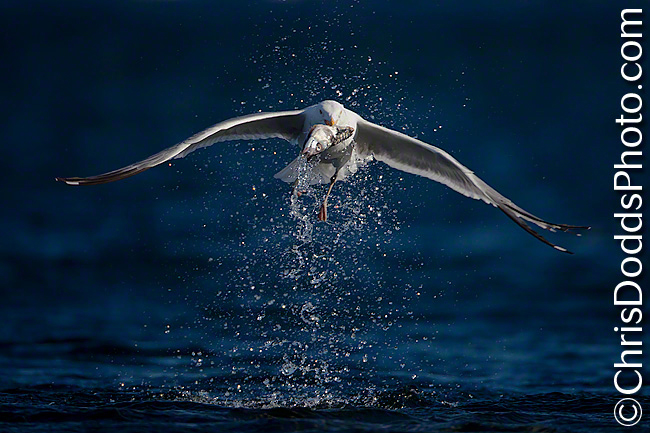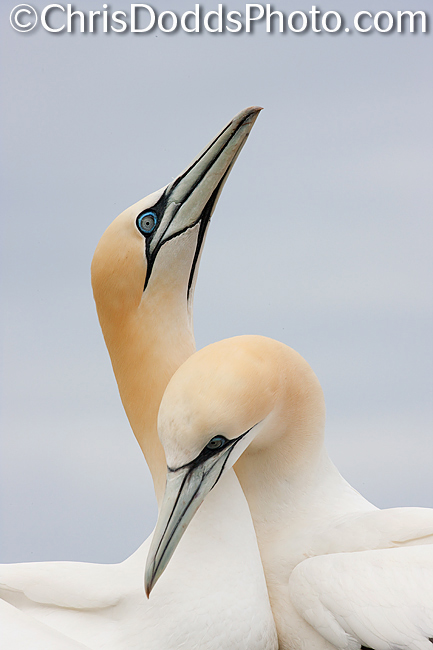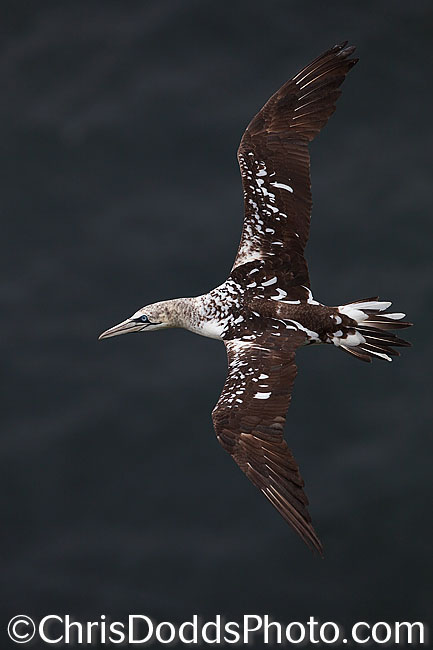 Lincoln's Sparrow vertical look-back with reflection, Melospiza lincolnii (Bruant de Lincoln) Point Pelee National Park of Canada (Southwestern Ontario, Canada). Image Copyright ©Christopher Dodds www.chrisdoddsphoto.com All Rights Reserved. Canon EOS-1D MKIV, 500mm F4L IS USM and 2X II Tele-extender. ISO 800, 1/200s F9. Canon 580 EX II Flash in manual mode. Tripod and Wimberley Head II. CLICK HERE TO PURCHASE A PRINT or LICENSE IMAGE FOR PUBLICATION.
Lincoln's Sparrow vertical look-back with reflection, Melospiza lincolnii (Bruant de Lincoln) Point Pelee National Park of Canada (Southwestern Ontario, Canada). Image Copyright ©Christopher Dodds www.chrisdoddsphoto.com All Rights Reserved. Canon EOS-1D MKIV, 500mm F4L IS USM and 2X II Tele-extender. ISO 800, 1/200s F9. Canon 580 EX II Flash in manual mode. Tripod and Wimberley Head II. CLICK HERE TO PURCHASE A PRINT or LICENSE IMAGE FOR PUBLICATION.
Point Pelee Spring Songbird bird photography workshop / safari report
Just back from leading my annual spring bird photography workshop / safari at Point Pelee National Park near Leamington, Ontario. I was joined by Robert Parent & Sylvie Desjardins of Lac-Beauport (Quebec), Gail Bisson of Sydney (Nova Scotia), Multiple workshop veterans (and friends) Rick & Melody Curtis of Flower Mound (Texas) and Jerry Purdy of Kalamazoo (Michigan); a fine crew. There was lots of speculation about what kind of photography would be possible with the early leaf-out and unusually warm spring. Things did start slowly and, in keeping with tradition Jerry Purdy had to leave early to take care of business; sparking the start to the best spring migration I've ever witnessed at Point Pelee (sorry Jerry). The days are all blurred into one in my memory, but once things got started, the quantity and quality of birds dripping out of trees keep increasing. Unfortunately, the most memorable moments were the afternoon after the workshop had ended, so only Rick and Melody Curtis joined Julie and I for the dozens of Blackburnian Warblers dripping from the trees in Tilden Woods that afternoon. The next morning brought a gorgeous male Kirtland's Warbler that stuck around all day on East beach. Suffice it to say; it was the best I have ever seen it at Point Pelee! My only wish would have been for everyone in the workshop to have witnessed Pelee's best.
 Lincoln's Sparrow , Melospiza lincolnii (Bruant de Lincoln) Point Pelee National Park of Canada (Southwestern Ontario, Canada). Image Copyright ©Christopher Dodds www.chrisdoddsphoto.com All Rights Reserved. Canon EOS-1D MKIV, 500mm F4L IS USM and 2X II Tele-extender. ISO 800, 1/200s F9. Canon 580 EX II Flash in manual mode. Tripod and Wimberley Head II. CLICK HERE TO PURCHASE A PRINT or LICENSE IMAGE FOR PUBLICATION.
Lincoln's Sparrow , Melospiza lincolnii (Bruant de Lincoln) Point Pelee National Park of Canada (Southwestern Ontario, Canada). Image Copyright ©Christopher Dodds www.chrisdoddsphoto.com All Rights Reserved. Canon EOS-1D MKIV, 500mm F4L IS USM and 2X II Tele-extender. ISO 800, 1/200s F9. Canon 580 EX II Flash in manual mode. Tripod and Wimberley Head II. CLICK HERE TO PURCHASE A PRINT or LICENSE IMAGE FOR PUBLICATION.
Hydrophobia to the rescue
The weather ranged from cold to freezing cold with a fair mix of rain and cloud. Greg Downing (NatureScapes.net) and Bian Erwin (Think-Tank Photo) conspired to send me a rather thoughtful assortment of rain gear for my camera as an early birthday gift (it was my birthday on May 6 when I drove to Pelee); suffice it to say that their timing was impeccable and the Hydrophobia 300-600, Hydrophobia 70-200 & Hydrophobia 70-200 Flash were all put to good use - watch for a full review after more field testing during my Bonaventure Island Gannets Galore workshop series in June. We even endured hail and sleet between a rather monsoonish downpour while photographing at our set-ups at Rondeau Provincial Park. This gear is the ONLY camera rain covers that have ever worked for me; Thank-you Greg & Brian.
Kudos...
"Hey Chris,
We wanted to thank you for the great time and wonderful experience. It was just awesome to see so many birds including all the Warblers and Tanagers all in one area. "I got a feeling" that having the rare opportunity to photograph and hear the Kirkland Warbler singing was an experience that many birders would have been very envious of. The Yellow Billed Cuckoo was outstanding to see and we were got some marvelous shots even for the Texas Zoomers. We had the opportunity to take great shots of the Northern Parula, Tennessee, Chestnut-sided, Black-throated Blue, Cape May, Black-throated Green, Blackburnian, Pine, Black-and-white and American Redstart Warblers. We saw many other birds and Warblers adding to the excitement of the workshop (even the "OMG" Bay-breasted Warbler).
It was a fun workshop and a pleasure to met Julie, Jerry, Robert, Sylvie, and Gail. Thanks again for all your advice, counsel and exercise (hahaha). Looking forward to another workshop in the future and anytime you are in Texas give us a shout.
Sincerely,
Texas Zoomers (aka Rick & Melody Curtis from Flower Mound, Texas)"
 Lincoln's Sparrow with crest raised, Melospiza lincolnii (Bruant de Lincoln) Point Pelee National Park of Canada (Southwestern Ontario, Canada). Image Copyright ©Christopher Dodds www.chrisdoddsphoto.com All Rights Reserved. Canon EOS-1D MKIV, 500mm F4L IS USM and 2X II Tele-extender. ISO 800, 1/200s F9. Canon 580 EX II Flash in manual mode. Tripod and Wimberley Head II. CLICK HERE TO PURCHASE A PRINT or LICENSE IMAGE FOR PUBLICATION.
Lincoln's Sparrow with crest raised, Melospiza lincolnii (Bruant de Lincoln) Point Pelee National Park of Canada (Southwestern Ontario, Canada). Image Copyright ©Christopher Dodds www.chrisdoddsphoto.com All Rights Reserved. Canon EOS-1D MKIV, 500mm F4L IS USM and 2X II Tele-extender. ISO 800, 1/200s F9. Canon 580 EX II Flash in manual mode. Tripod and Wimberley Head II. CLICK HERE TO PURCHASE A PRINT or LICENSE IMAGE FOR PUBLICATION. Lincoln's Sparrow vertical portrait, Melospiza lincolnii (Bruant de Lincoln) Point Pelee National Park of Canada (Southwestern Ontario, Canada). Image Copyright ©Christopher Dodds www.chrisdoddsphoto.com All Rights Reserved. Canon EOS-1D MKIV, 500mm F4L IS USM and 2X II Tele-extender. ISO 800, 1/100s F9. Canon 580 EX II Flash in manual mode. Tripod and Wimberley Head II. CLICK HERE TO PURCHASE A PRINT or LICENSE IMAGE FOR PUBLICATION.
Lincoln's Sparrow vertical portrait, Melospiza lincolnii (Bruant de Lincoln) Point Pelee National Park of Canada (Southwestern Ontario, Canada). Image Copyright ©Christopher Dodds www.chrisdoddsphoto.com All Rights Reserved. Canon EOS-1D MKIV, 500mm F4L IS USM and 2X II Tele-extender. ISO 800, 1/100s F9. Canon 580 EX II Flash in manual mode. Tripod and Wimberley Head II. CLICK HERE TO PURCHASE A PRINT or LICENSE IMAGE FOR PUBLICATION.
Lincoln's Sparrow Melospiza lincolnii (Bruant de Lincoln, LISP)
A species only seen during migration for most Great Lakes Region birder, William Brewster (1936, in Bent 1968) describes the Lincoln's Sparrow as "a keen, intelligent little traveler, evidently, quite alive to the fact that dangers threatened at all times, but too cool-headed and experienced to be subject to the needless and foolish panics which seize upon many of the similar birds." Lincoln's Sparrows are remarkable for staying well hidden, but a careful observer, with patience, can often get quite a good look. These Sparrows often raise their crown feathers when alert or concerned, giving their heads a bit of a peaked appearance. The Lincoln's Sparrow, Melospiza lincolnii, bruant de lincoln, is a medium-sized sparrow. Adults have dark-streaked olive-brown upperparts with a light brown breast with fine streaks, a white belly and a white throat. They have a brown cap with a grey stripe in the middle, olive-brown wings and a narrow tail. Their face is grey with brown cheeks, a brown line through the eye and an eye ring. They are somewhat similar in appearance to the Song Sparrow. Their breeding habitat is wet thickets or shrubby bogs across Canada, Alaska and the northeastern and western United States; this bird is less common in the eastern parts of its range. The nest is a well-concealed shallow open cup on the ground under vegetation. These birds migrate to the southern United States, Mexico and northern Central America; they are passage migrants over much of the United States, except in the west. They forage on the ground in dense vegetation, mainly eating insects and seeds.
They are very secretive. Their song is a musical trill, but this bird is often not seen or heard even where they are common. This bird was named by Audubon after his friend, Thomas Lincoln, of Dennysville, Maine. Lincoln shot the bird on a trip with Audubon to Nova Scotia in 1834, and Audubon named it "Tom's Finch" in his honor.
 Coastal Brown Bear CUB OF HEARTS (Ursus arctos) Katmai National Park, AK ©Christopher Dodds All Rights Reserved. Canon EOS 5DMKII, 70-200mm F2.8 @125mm ISO 400, F8 1/320s Manual mode. CLICK HERE TO PURCHASE A PRINT or LICENSE IMAGE FOR PUBLICATION.
Coastal Brown Bear CUB OF HEARTS (Ursus arctos) Katmai National Park, AK ©Christopher Dodds All Rights Reserved. Canon EOS 5DMKII, 70-200mm F2.8 @125mm ISO 400, F8 1/320s Manual mode. CLICK HERE TO PURCHASE A PRINT or LICENSE IMAGE FOR PUBLICATION.


















